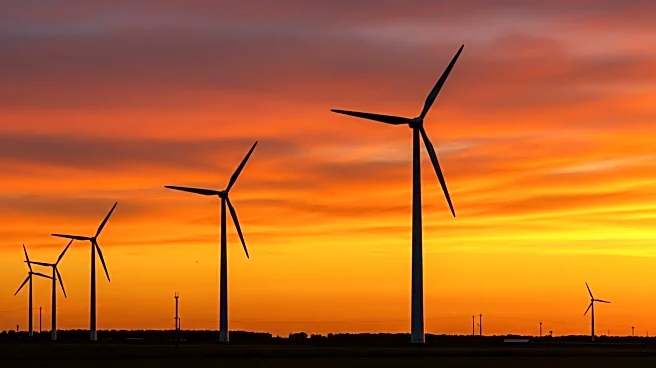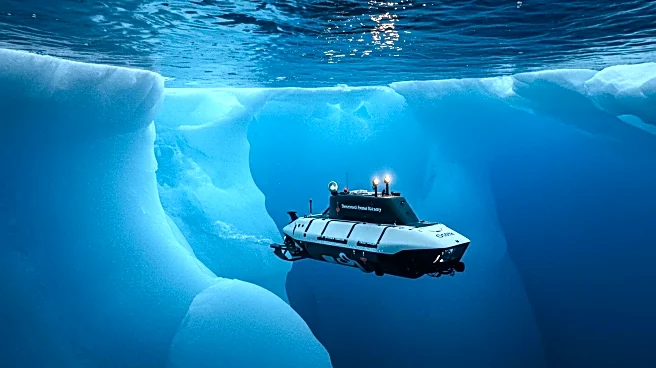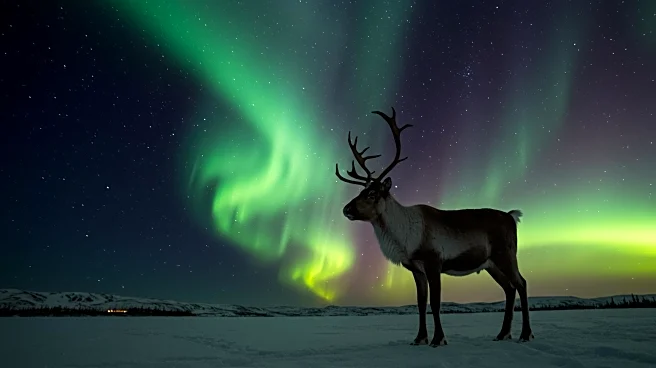What is the story about?
What's Happening?
Researchers have uncovered a significant and unexpected phenomenon on Greenland's ice sheet, where a massive eruption of meltwater from a subglacial lake occurred in 2014. This event, which was identified through satellite imagery, revealed a large crater formed by the meltwater bursting through the ice sheet. Malcolm McMillan from Lancaster University noted that while subglacial lakes are known to drain, the fracturing and eruption of water through the ice surface is unprecedented. The discovery challenges existing understanding of meltwater dynamics beneath Greenland's ice sheet.
Why It's Important?
The findings highlight the need for further research into Greenland's ice sheet, which is crucial for understanding global climate change impacts. Greenland holds the second-largest ice cover after Antarctica, and its melting contributes to rising sea levels and extreme weather events. NASA research indicates a significant loss of Arctic ice due to rising global temperatures, with a 12.2% reduction per decade. This poses threats to wildlife habitats and increases the urgency for climate policy development. The study underscores the importance of addressing planet-heating air pollution and exploring geoengineering solutions.
What's Next?
The study's insights are expected to inform future climate policies and research into geoengineering solutions aimed at preserving polar ice caps. These solutions require extensive study and development over several years. Public awareness and adoption of clean energy practices are encouraged to support broader efforts in combating climate change. The scientific community continues to explore innovative approaches to mitigate the impacts of ice sheet melting and global warming.
AI Generated Content
Do you find this article useful?












